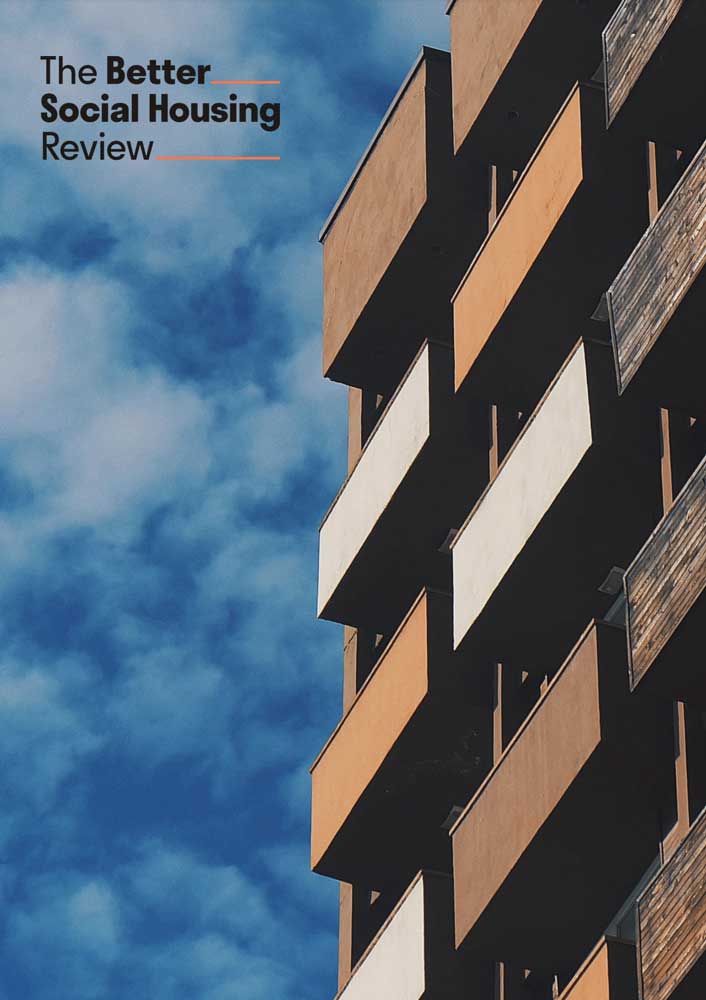In search of housing’s core purpose
The RNLI measures its success against the number of lives saved at sea. Establishing a similar unit of currency for housing is by no means simple but it could give associations renewed clarity of purpose

STRATEGY
Image: Istock

James Tickell
Partner, Campbell Tickell
Issue 64 | February 2023
“Every housing association, and the sector as a whole, should refocus on their core purpose and deliver against it.”
So says the Better Social Housing Review, and it is surely hard to disagree. All charities and not-for-profits need to be focused on their core purpose. Housing associations are not driven by the need to make a profit – the ultimate unit of currency for measuring the success of a for-profit is a pound sterling. For a charity, it’s .... well .... what is the unit of currency for measuring the success of a charity? Or even harder to pin down, for the success of a whole sector, in all its diversity?
Saving lives at sea
A useful example is the RNLI. It has a very clear unit of currency – a life saved at sea. They know pretty much exactly how many lives they’ve saved since 1824 – getting on for 144,000. And their plans, their priorities and culture are all predicated on the need to save as many lives at sea around the UK.
When they face a dilemma about where to focus their resources, the question is simple – which of these choices is more likely to save more lives? Other charities have similar clarity of purpose: finding a cure for cancer, providing guide dogs for people who are blind, getting rough sleepers off the streets, and more besides.
The purpose of social housing?
But housing associations? What’s their corresponding unit of currency? It’s complicated. When I’ve posed that question at recent board awaydays, it tends to provoke impassioned debate. But there isn’t a simple answer. A new letting to a person in need is a good start, but really doesn’t do justice to the complexity of social housing. Tenant satisfaction, the state of properties, the health of communities and life opportunities for individuals are all important too. So, does that mean that housing associations can never achieve the RNLI’s admirable simplicity of purpose?
Of course, there are already several ways in which housing associations can evaluate their social impact. Environmental, Social and Governance (ESG) reporting is becoming widespread. The regulatory requirement to consider value for money is another part of the operating context. More widely, the housing charity HACT’s Social Value Bank, as an example, has some 88 outcomes that can be measured, with a financial metric, environmental measures, a wellbeing value, a health value, and for most of the 88, an Exchequer savings value.
That all offers much food for thought, but not yet our elusive unit of currency. Maybe housing is just too complicated for there to be a single unit of currency? After all, each tenant is an individual customer, with highly diverse needs and choices, unlike someone being plucked from the ocean.

“Maybe housing is just too complicated for there to be a single unit of currency?”
The imperfect but interesting example of health
Let’s turn then to health for inspiration, and to the QALY – Quality Adjusted Life Year. That’s the methodology used by the National Institute for Clinical Excellence (NICE) to evaluate the use of proposed drugs or procedures for the NHS. To over-simplify, if a new drug can likely provide a patient with 10 extra years of life, with perfect quality of life during that time, it might score 9 QALYs. But if it provides a year of life, with painful side effects throughout, it would score just 0.5 of a QALY, or less.
That all sounds cruelly dispassionate. But finance-driven and bureaucratic though it may sound, a similar cost-benefit methodology operates in every health system across the globe. On the plus side, a QALY certainly is a single unit of currency, which encompasses any number of complex and competing factors – corresponding better to housing than to saving lives at sea.
Quality of life in housing
So maybe the answer is a housing-specific version of the QALY, drawing on the work already done on social value measurement, and having been subject to extensive consultation with tenants who self-evidently know best what matters to them. We’ll call it the HQALY for now. It would need to be based on just a few key factors, say no more than half a dozen.
The state of the home and the neighbourhood would be vital. So too would customer satisfaction, cost in use and access to services, support, education, employment and amenities. There could be any number of more secondary or supporting measures – health, environment, economic and so on – drawing again on the HACT and ESG work, but the single HQALY unit of currency would have primacy. Not quite as crystal clear (nor as dramatic) as a life saved at sea, but clear enough. Over a period of time, the health and economic impact of an HQALY would become apparent, and this would be a powerful lobbying tool for the sector as a whole.
The HQALY in practice
Let’s take a notional housing association with 10,000 homes. Given a few older properties, it might score 8,000 HQALYs in a particular year. What questions might arise? For example:
- Comparing the circumstances of new tenants just before taking up their tenancy, how many HQALYs did the association’s new lettings over the year add? And what about the whole sector?
- How much does each HQALY cost to deliver? Compared to other social landlords?
- Would it be better to build and let 100 new homes with 100 new HQALYs, or push up the overall score to 8,500 by investing the same sum in the existing stock?
- How much HQALY difference to tenants would investing in decarbonisation make?
- How many more HQALYs are delivered by the association as compared to private sector renting for 10,000 people from the same socio-economic groups as tenants?
Critically, this would only work on a sector scale if the initiative had near-universal take-up, and was endorsed by the key sector bodies. But individual associations can get going right away.
What next?
This is a thought piece for discussion, not a detailed manifesto for change. The overall proposition is clear enough, that a social housing tenancy should contribute to an improved quality of life for its residents, and that the level of improvement can be measured. And critically, that the overall charitable and social purpose of housing associations as a sector can thus best be defined.
Meanwhile, and in line with the Better Social Housing Review, I commend to the board of each housing association to set aside time, and carefully reconsider their social purpose. In doing so, they can draw on the inspiration of the RNLI, work on measurement of social impact, both along with the more sobering (but nonetheless instructive) example of the health QALY.
“The overall proposition is clear enough, that a social housing tenancy should contribute to an improved quality of life for its residents.”


